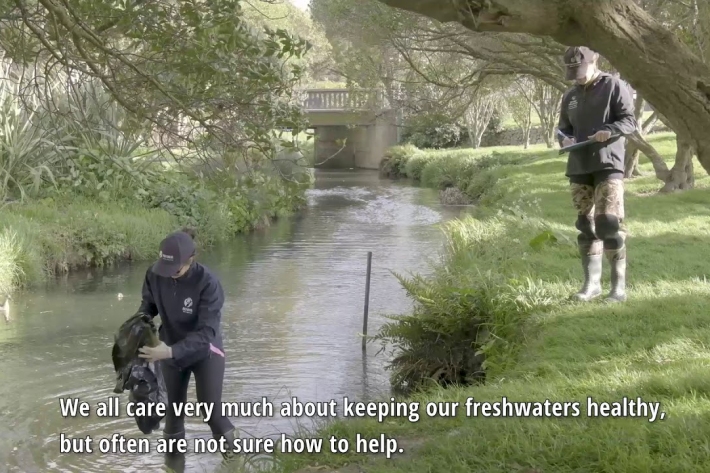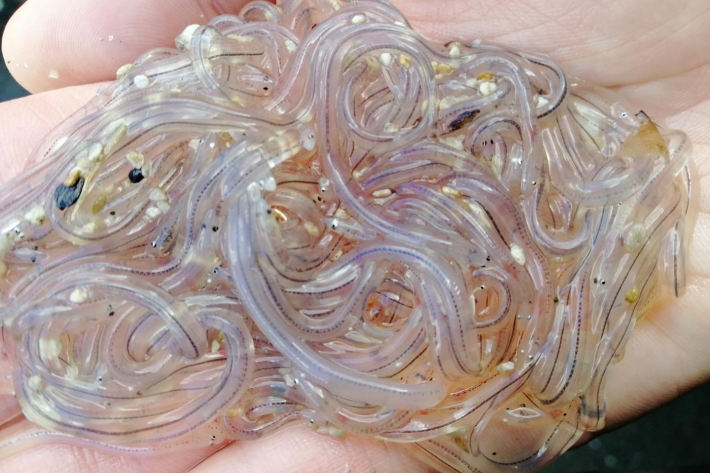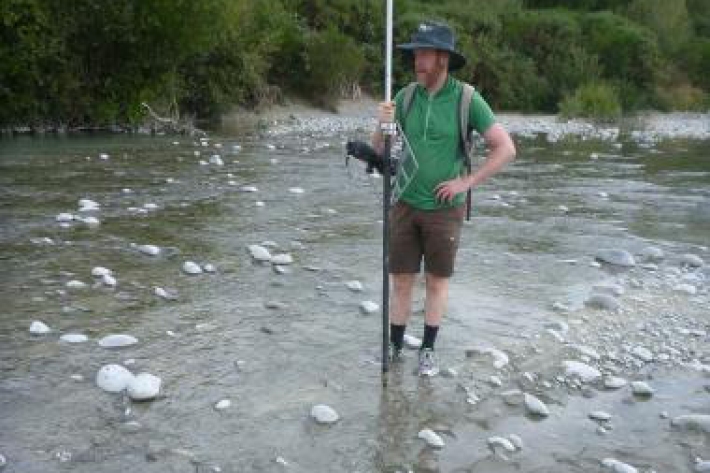-

How does a fish climb a ramp? Very, very cleverly…
Feature story18 January 2021New Zealand’s native fish are doing their best to climb up ramps in a NIWA laboratory so scientists can learn how to better help them navigate our tricky waterways. -

Freshwater species show vulnerability to climate change
Media release15 September 2020A new study has identified seven freshwater species native to Aotearoa-New Zealand that will likely be highly or very highly vulnerable to climate change. -

Maniapoto Cultural Assessment Framework
Research ProjectTe Nehenehenui (previously Maniapoto Māori Trust board) and NIWA are working collaboratively to support Ngāti Maniapoto whānau to reconnect with and participate in the assessment of their freshwater according to their values. -

Overview of SHMAK
How healthy is your stream? SHMAK—the New Zealand Stream Health Monitoring and Assessment Kit—has been designed to help you find out. -

Scientists study eels by moonlight
Media release01 August 2019Under the light of the moon where the river meets the sea, NIWA researchers are planning to catch tiny fish that are all but invisible to the naked eye. -

Flood-harvesting effects on braided river geomorphology
Research ProjectThe alp-fed braided rivers of Canterbury are treasured for their landscape, recreational amenities, salmon- and trout-fishing, and unique riverine environments – which provide habitat to a host of endangered birds – but they are under threat from land-use intensification and a growing demand for irrigation water. -

Braided river morphodynamics and invasive exotic vegetation
Research ProjectBraided rivers are an arena where woody weeds and floods are in constant competition with each other.
Braided rivers naturally flood frequently, repeatedly mobilising their bed sediments and shifting their multiple channels. -

Plastic pollution processes in rivers
Research ProjectMost of the plastic in the ocean originates on land, being carried to the estuaries and coasts by rivers. Managing this plastic on land before it reaches the river could be the key to stemming the tide of marine-bound plastics. The aim of this project is to understand the sources and fate of plastic pollution carried by urban rivers using the Kaiwharawhara Stream as a case study. -

Scientist collects rubbish to rid rivers of plastics
Feature story16 January 2019It may be rubbish to everyone else, but to Amanda Valois each little scrap of plastic on a river bank or in a waterway tells a valuable story. -

NIWA scientist throws light on the Red Zone
Feature story21 December 2018Christchurch’s Red Zone is to be the focal point of a scientific experiment involving street lights and insects over summer. -

River forecasting: capabilities versus user requirements
Research ProjectCurrently there are gaps in understanding of user decision making processes and public needs and requirements for river forecasting in New Zealand. This project aims to bridge NIWA river forecasting aspirations and capabilities with both the public and decision makers’ requirements.

